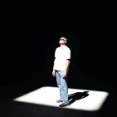Reason for still using film (again)?
-
Recently Browsing 0 members
- No registered users viewing this page.
-
Similar Content
-
- 14 replies
- 621 views
-
Still trying
By jpreisch,
- 2 replies
- 138 views
-
- 35 replies
- 5,029 views
-
- 6 replies
- 245 views
-
- 156 replies
- 28,035 views
-





Recommended Posts
Join the conversation
You can post now and register later. If you have an account, sign in now to post with your account.
Note: Your post will require moderator approval before it will be visible.